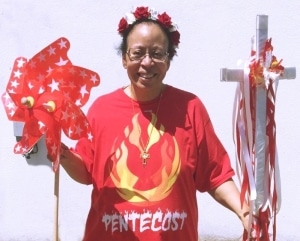 By Charity J. Dell
By Charity J. Dell
Jerusalem Channel Correspondent
Editor’s Note: Shavuot (May 25-27, 2023) and Pentecost-Whitsun (May 28) are coming up this week. Shavuot/Pentecost is a large one-day feast which commemorates the Children of Israel receiving the 10 Commandments at Mount Sinai. Shavuot also celebrates the outpouring of the Holy Spirit during the days of the Apostles. These two stories from the Bible are closely connected. Let us learn from our elders in the faith, the Jewish people, more about this significant time in Bible history. Shavuot is one of the three annual biblical festivals on which every male Israelite is commanded to make a pilgrimage to the Temple. Shavuot is also referred to in the Torah as Chag Ha-Katzir, the Feast of Harvest (Exodus 23:16) and Yom Ha-Bikurim, the Day of Firstfruits (Numbers 28:26).
Pentecost was the first of the Shelosh Regalim (the three major festivals of the Lord) that I began to celebrate back in 1984, when I had a children’s choir at the Assembly of God in Xenia, Ohio. At that time, I began to research the festivals of the Church/Christian Year and the Hebrew festivals of the Old Covenant. Every year I added more customs, including biblical traditions, Jewish traditions, Pentecost/Whitsun customs and the Baptismal Spirituals of the African-American churches. Streamers in flame colors (red/orange/yellow) are given to the congregation to wave throughout the service.
Eventually, I evolved a “pageant format” in which the entire congregation “preaches the story” by doing these essential elements:
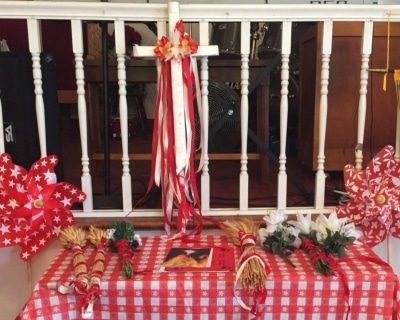
SHAVUOT-PENTECOST FESTIVAL SERVICE
1. Short introduction to Shavuot-Pentecost. We usually read Exodus 20:1-17; Leviticus 23:15-22; Deuteronomy 16 :9–11.
2. Processional of the Firstfruits–everyone in the congregation processes to the hymn “Ancient of Days,” as sung by Ron Kenoly with the grain sheaves, challah bread and Italian/French bread loaves, red and white flowers, and various baskets of fruits and flowers.
3. The Declaration of Thanksgiving–Deuteronomy 26:5-10. With the completion of this passage, the congregation then understands what was being celebrated on the Festival of Firstfruits. Participants lift up the wave loaves and grain sheaves and wave them before the Lord.
4. Music–we may use any song, such as “Send It On Down” from the Black Gospel tradition.
5. Psalm 104 or Psalm 126, followed by the prophecy of Joel 2:28-32.
6. The Instruction of Jesus/Yeshua: John 20:22. He breathed on them and said, “Receive the Holy Spirit.
7. The Descent of the Holy Ghost–Acts 2. We play a gale force wind sound through the church sound system, while the scripture is read. The congregation waves red/orange/yellow streamers, resembling “tongues of fire.” If anyone can read a foreign language, they read the scripture out loud during this time. This re-enacts the events of Shavuot-Pentecost in the New Testament.
8. Song of Praise–“Pentecost” by Lincoln Heights Missionary Baptist Church Choir. (You can hear this on YouTube.) We follow this with the Celebration of Baptism (as Pentecost/Whitsun is a favorite time for baptisms, christenings, confirmations and reception of new members). The congregation sings three Black Baptismal spirituals–
“Take Me to the Water”
“Pray On”
“Certainly, Lord”
9. We conclude the festival with a simple dance routine (with the streamers) to the song
“Send Your Rain” by the New Jersey Mass Choir. All the children/youth (and any adults) come up to the front of the sanctuary, and they follow me in a simple choreography. We encourage the congregation to clap along.
Everyone wears some combination of red, white or red-and-white to church. We encourage folks to wear comfortable clothes (T-shirts, flat shoes, etc.), as Pentecost is usually warm or hot.
All receive a “birth announcement” on red paper with the worship bulletin.
God impressed upon me that the agricultural element of Shavuot ties in to both the resurrection of Jesus/Yeshua–on the Yom haBikkurim (Firstfruits during Passover) (along with the Old Testament saints of Matthew 27:52) and the full harvest of souls on the Chag haBikkurim. Thus, having the congregation preach the entire story of Shavuot-Pentecost by doing everything, enables us to know “just what was going on” that day, when the Holy Spirit descended upon the 120 disciples.
The service only takes about 30-45 minutes, and because the festival “preaches itself,” no sermon is needed, unless the pastor feels the Holy Spirit moving that way!
By the way, the term “Whitsun” comes from the English custom of clergy and baptismal candidates wearing white on Pentecost; in Northern Europe, this was the preferred day to baptize new converts, when the rivers, lakes, streams and ponds were free of ice. “Whitsuntide” refers to the entire week of Pentecost, starting with “White Sunday.” The color red was added later in the 11th century, to represent the fire of the Holy Spirit. Churches also dropped rose petals on the congregation from the “Holy Ghost hole,” a wooden disc that had the dove painted on one side.
It’s always a special joy to see folks connect to their biblical Hebrew heritage by DOING these re-enactments of festivals. When you see the joy in faces, young and old, as people literally “walk through” the stories in their Bibles, it really makes it all worthwhile to make streamers, choose music, decorate the sanctuary and involve others in festive celebration!
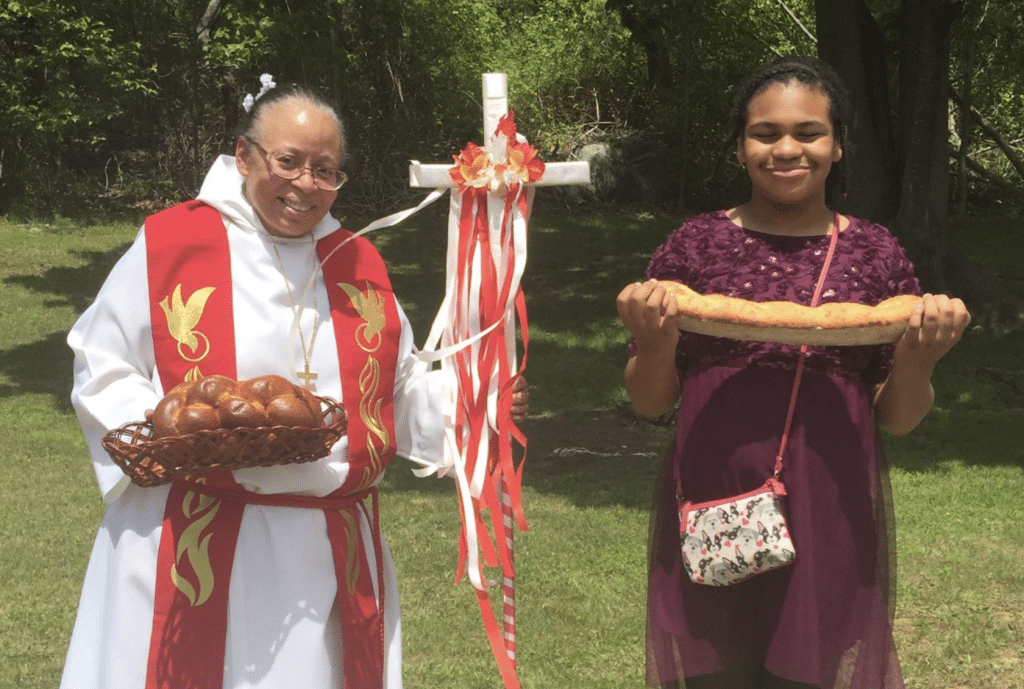
Jewish and Gentile Bread, two loaves to wave before the LORD

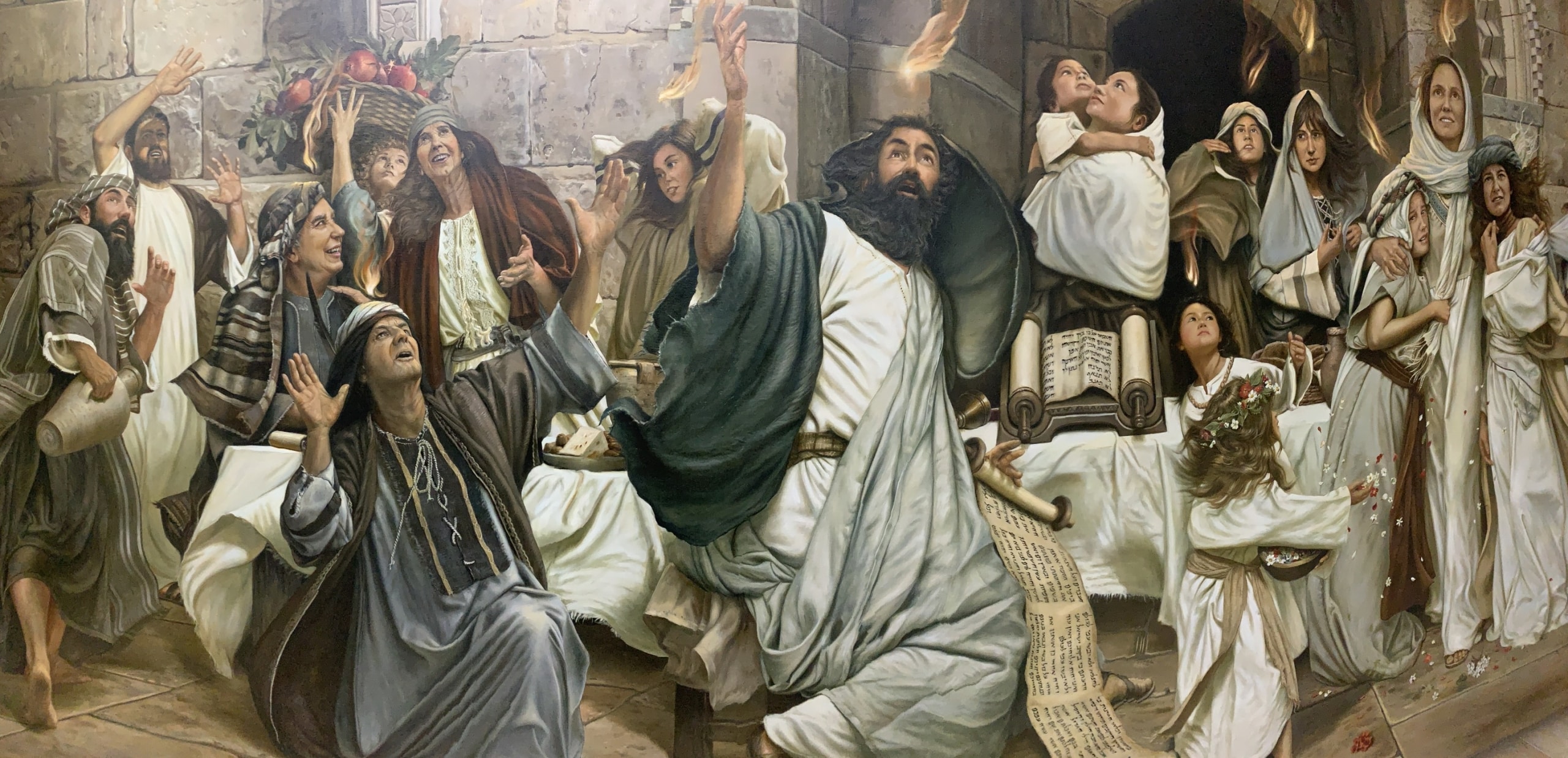
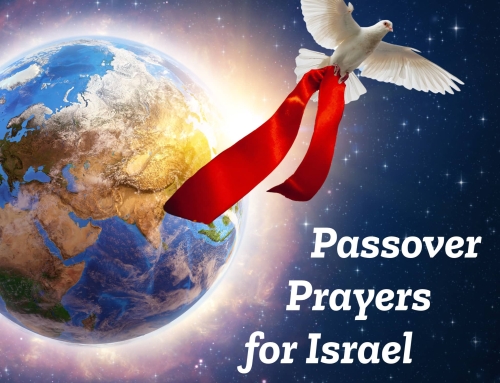
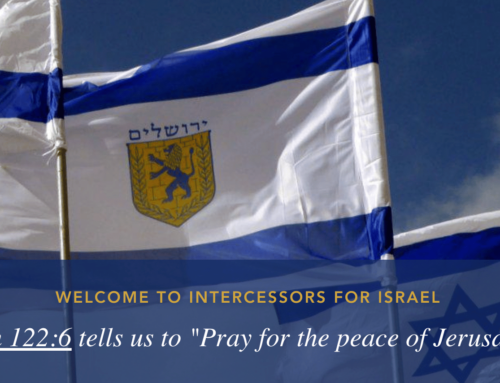
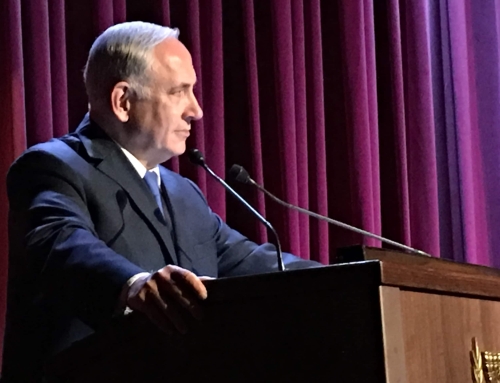
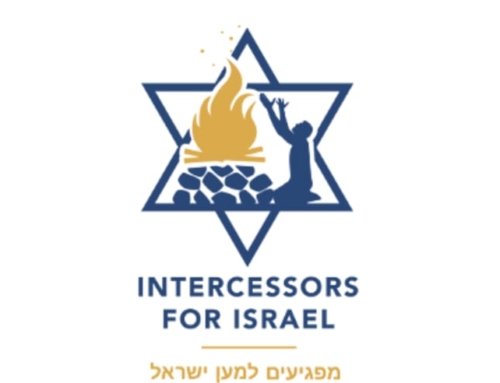

Leave A Comment